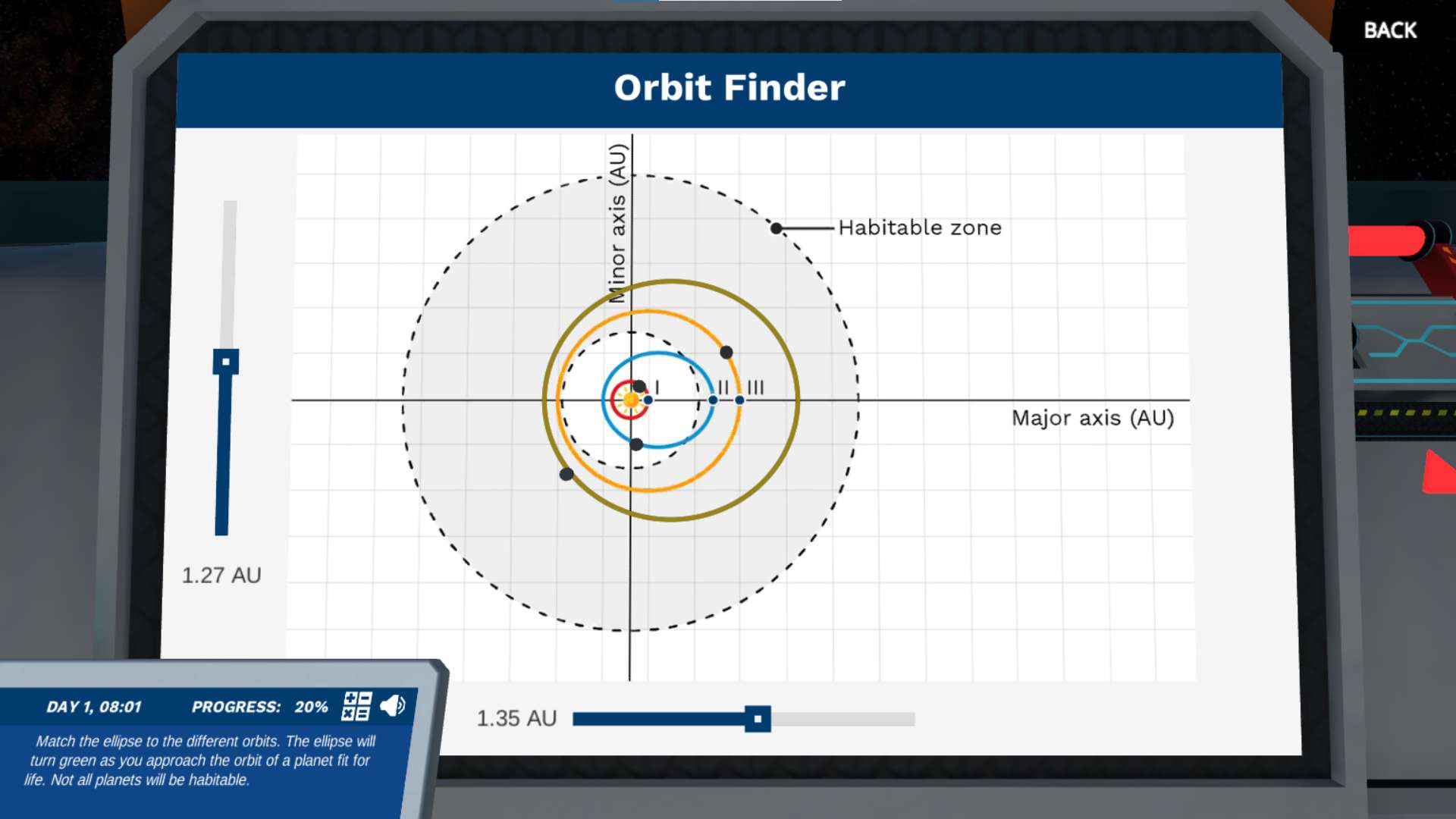Heading 1
Heading 2
Heading 3
Heading 4
Heading 5
Heading 6
Lorem ipsum dolor sit amet, consectetur adipiscing elit, sed do eiusmod tempor incididunt ut labore et dolore magna aliqua. Ut enim ad minim veniam, quis nostrud exercitation ullamco laboris nisi ut aliquip ex ea commodo consequat. Duis aute irure dolor in reprehenderit in voluptate velit esse cillum dolore eu fugiat nulla pariatur.
Block quote
Ordered list
- Item 1
- Item 2
- Item 3
Unordered list
- Item A
- Item B
- Item C
Bold text
Emphasis
Superscript
Subscript
About This Simulation
Travel through interstellar space and learn about Kepler's laws exploring an alien planetary system.
Learning Objectives
- Relate Kepler's laws to the common motions of objects in orbit
- Describe how a planet's velocity changes within its elliptical orbit
- Use Kepler's third law to relate the orbital period and the length of the semimajor axis of an orbit and predict the period of an orbit from its semimajor axis.
About This Simulation
Lab Techniques
Related Standards
- ESS1.A-M1
- ESS1.B-H1
Learn More About This Simulation
Captain, the mysteries of the Astakos planetary system await us! In this simulation, you will learn about the orbits of celestial bodies through Kepler's laws of planetary motion. Join the search for life in new worlds and learn about the shape of orbits, about how a planet’s velocity changes along its orbit, and about the relationship between the periods of orbits of different sizes.
Explore the Astakos planetary system
Our mission is to search for life in an alien planetary system. The student will experiment with different elliptical orbits to find out which of the orbits in the system correspond to a potentially habitable planet. Next, they will use Kepler's second law to follow their planet of interest closely. Lastly, they will gather data to deduce Kepler's third law and use it to put a geostationary satellite in orbit.
Experiment with orbits and satellites
Students will manipulate ellipses to analyze different planetary orbits. They will observe and think critically about Kepler’s second law to predict the motion of the planet of interest. Lastly, they will put their own satellite in orbit with an interactive simulation, obtaining a hands-on experience of Kepler’s third law only a virtual lab can deliver.
This simulation contextualizes scientific knowledge and incorporates it into an immersive and exciting storyline.
Say ‘Cheese’!
At the end of the sim, you will use your knowledge of Kepler’s laws to launch a geostationary satellite and take a picture of an exoplanet’s surface. What wonders will we find in this new world?
For Science Programs Providing a Learning Advantage
Boost STEM Pass Rates
Boost Learning with Fun
75% of students show high engagement and improved grades with Labster
Discover Simulations That Match Your Syllabus
Easily bolster your learning objectives with relevant, interactive content
Place Students in the Shoes of Real Scientists
Practice a lab procedure or visualize theory through narrative-driven scenarios


FAQs
Find answers to frequently asked questions.
Heading 1
Heading 2
Heading 3
Heading 4
Heading 5
Heading 6
Lorem ipsum dolor sit amet, consectetur adipiscing elit, sed do eiusmod tempor incididunt ut labore et dolore magna aliqua. Ut enim ad minim veniam, quis nostrud exercitation ullamco laboris nisi ut aliquip ex ea commodo consequat. Duis aute irure dolor in reprehenderit in voluptate velit esse cillum dolore eu fugiat nulla pariatur.
Block quote
Ordered list
- Item 1
- Item 2
- Item 3
Unordered list
- Item A
- Item B
- Item C
Bold text
Emphasis
Superscript
Subscript
A Labster virtual lab is an interactive, multimedia assignment that students access right from their computers. Many Labster virtual labs prepare students for success in college by introducing foundational knowledge using multimedia visualizations that make it easier to understand complex concepts. Other Labster virtual labs prepare learners for careers in STEM labs by giving them realistic practice on lab techniques and procedures.
Labster’s virtual lab simulations are created by scientists and designed to maximize engagement and interactivity. Unlike watching a video or reading a textbook, Labster virtual labs are interactive. To make progress, students must think critically and solve a real-world problem. We believe that learning by doing makes STEM stick.
Yes, Labster is compatible with all major LMS (Learning Management Systems) including Blackboard, Canvas, D2L, Moodle, and many others. Students can access Labster like any other assignment. If your institution does not choose an LMS integration, students will log into Labster’s Course Manager once they have an account created. Your institution will decide which is the best access method.
Labster is available for purchase by instructors, faculty, and administrators at education institutions. Purchasing our starter package, Labster Explorer, can be done using a credit card if you are located in the USA, Canada, or Mexico. If you are outside of North America or are choosing a higher plan, please speak with a Labster sales representative. Compare plans.
Labster supports a wide range of STEM courses at the high school, college, and university level across fields in biology, chemistry, physics, and health sciences. You can identify topics for your courses by searching our Content Catalog.



















